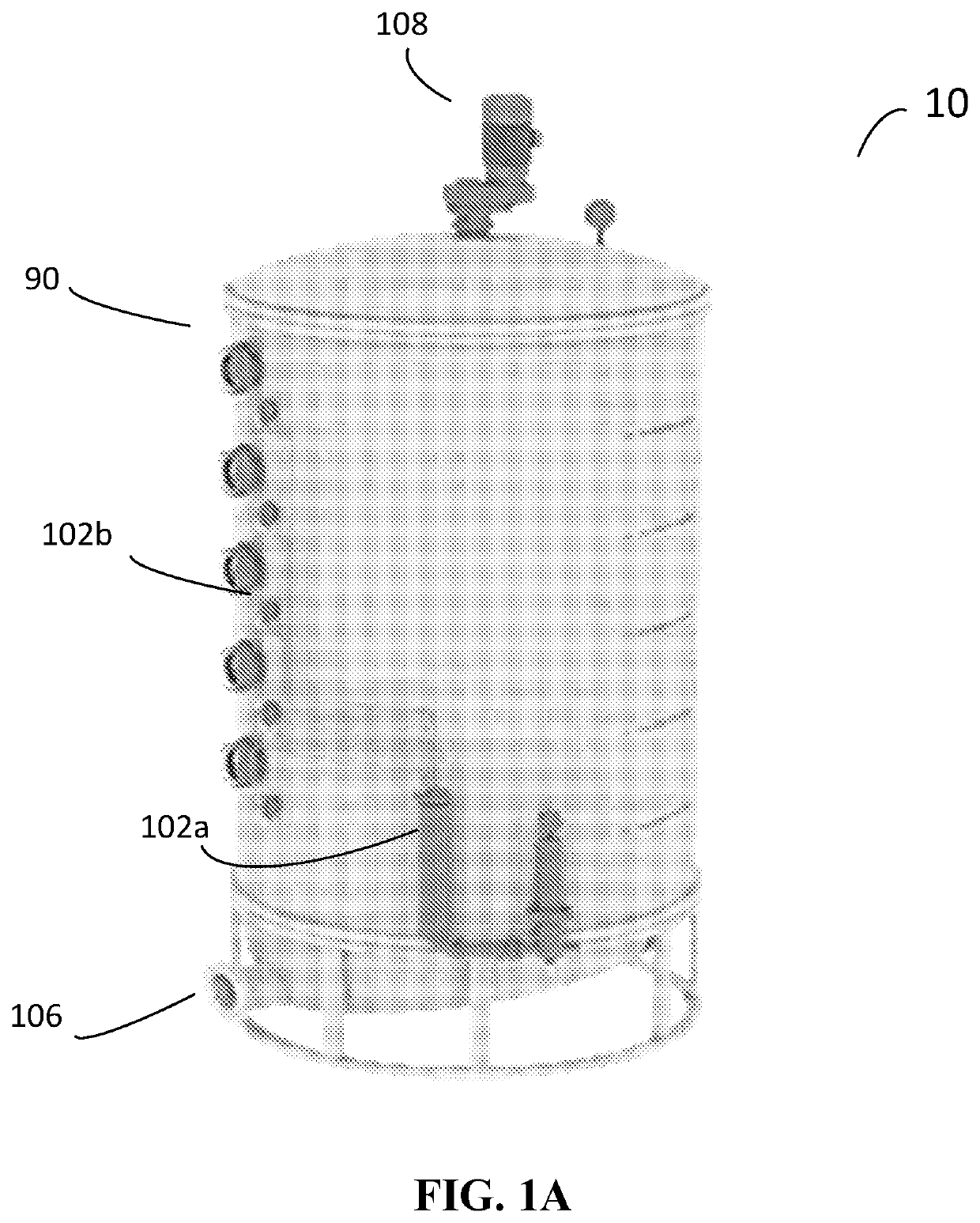Reactor for Two-Stage Liquid-Solid State Fermentation of Microorganisms
a technology of liquid solid state fermentation and microorganisms, which is applied in the direction of microorganisms, apparatus sterilization, after-treatment of biomass, etc., can solve the problems of complex transportation of microorganisms produced by submerged cultivation, limited benefits of microbial products in large-scale operations with sufficient inoculum,
- Summary
- Abstract
- Description
- Claims
- Application Information
AI Technical Summary
Benefits of technology
Problems solved by technology
Method used
Image
Examples
example 1
Example 1
Second Vessel Design
[0174]Referring to FIGS. 1A-1B, the second vessel 10 according to the subject invention preferably comprises a plurality of smaller chambers 100, each of which is adapted for housing a solid substrate 101.
[0175]In certain embodiments each of the plurality of chambers 100 is completely separate from each of the others, so as to prevent the spread of contamination between the chambers 100. In one embodiment, a solid substrate is spread 101 into each chamber 100. An aliquot of the culture, in liquid form, is directed through each of the inoculation lines 90 and sprayed onto, or otherwise contacted with, the solid substrate 101 within each of the chambers 100. In certain embodiments, the system comprises a means for spreading the culture in an even layer over the substrate 103.
[0176]In some embodiments, the second vessel 10 can comprise an aeration system 102a to provide slow motion air supply and / or temperature control within in each chamber. In some embodi...
PUM
 Login to View More
Login to View More Abstract
Description
Claims
Application Information
 Login to View More
Login to View More - R&D
- Intellectual Property
- Life Sciences
- Materials
- Tech Scout
- Unparalleled Data Quality
- Higher Quality Content
- 60% Fewer Hallucinations
Browse by: Latest US Patents, China's latest patents, Technical Efficacy Thesaurus, Application Domain, Technology Topic, Popular Technical Reports.
© 2025 PatSnap. All rights reserved.Legal|Privacy policy|Modern Slavery Act Transparency Statement|Sitemap|About US| Contact US: help@patsnap.com



